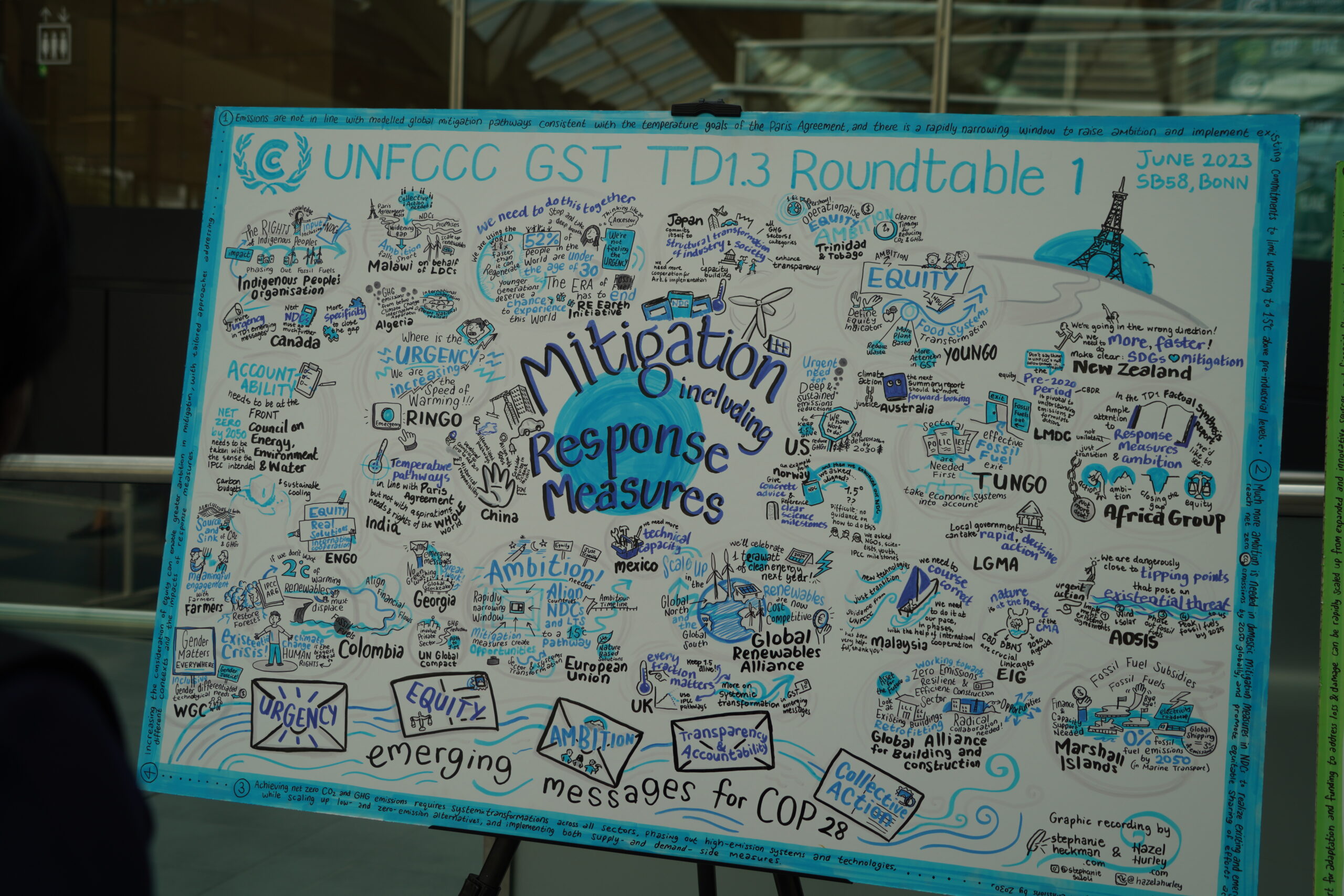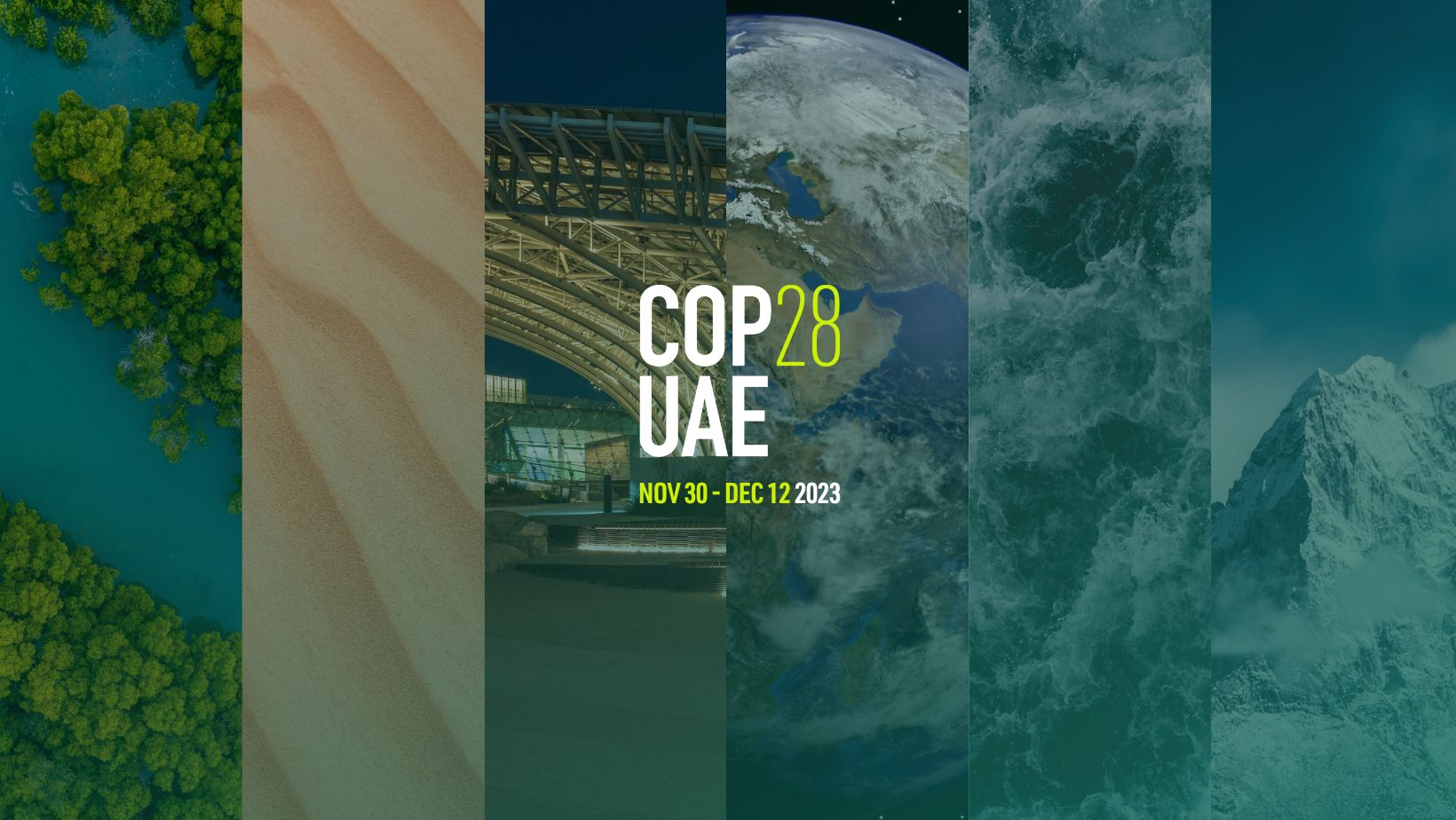
The global stocktake's third and final technical dialogue gets underway at the Bonn Climate Change Conference. Photo courtesy of the UNFCCC.
Research Scientist and Senior Campaigner, Woodwell Climate Research Center
Jessica Howard M.S.Arctic Communications Specialist, Woodwell Climate Research Center
Permafrost Pathways continues to advocate for the accounting of permafrost carbon emissions and submits to the Global Stocktake
In June, the 58th session of the Subsidiary Bodies (SB58) for Scientific and Technological Advice (SBSTA) and for Implementation (SBI) was held in Bonn, Germany. Meetings of the Subsidiary Bodies are where technical work under the United Nations Framework Convention on Climate Change (UNFCCC) happens, and are therefore an essential international space for Permafrost Pathways to elevate the impacts of permafrost thaw on global climate. SB58 was an opportunity to build on the outcomes of COP27; to clarify expectations and prepare deliverables for COP28; and continue discussions about key issues including the Global Stocktake (GST). As the only mechanism for critically assessing implementation of the Paris Agreement, the GST plays a pivotal role in driving ambitious climate action, but currently does not account for permafrost carbon emissions.

The importance of permafrost
Permafrost is frozen ground and underlies 15% of the Northern Hemisphere. Arctic permafrost stores vast amounts of carbon—almost twice as much carbon as is in the atmosphere and three times as much as in all of the trees on the planet combined. As permafrost thaws due to ongoing climate change that is warming the Arctic three to four times faster than the rest of the planet, that carbon becomes vulnerable to release. Between 24% and 69% of near-surface permafrost is projected to thaw this century. Thus, the Arctic permafrost region is expected to become a substantial net source of greenhouse gas emissions, emitting on a scale commensurate with a major world economy and establishing a positive feedback which will accelerate climate change.
Permafrost Pathways welcomes the central role of the Intergovernmental Panel on Climate Change (IPCC) in providing scientific input to the UNFCCC. However, while the recent IPCC Sixth Assessment Report (AR6) has taken a valuable first step towards accounting for permafrost emissions, a more comprehensive approach is needed in the context of the GST. Projected emissions from permafrost thaw this century are commensurate with those of a major world economy. Adequate accounting of these emissions is critical to accurately assess progress towards the Paris Agreement goals.
Visibility of permafrost and the cryosphere at SB58
Permafrost and other components of the ‘cryosphere’ (the frozen domain of the earth system) were the subject of discussion even before the official start of SB58 at a pre-sessional Technical Workshop on Cryosphere. This rare opportunity for UNFCCC delegates to explore the very latest cryosphere science was hosted by the Ambition on Melting Ice (AMI)—a high-level coalition of countries who hope to elevate the cryosphere within the UNFCCC proceedings, of which the International Cryosphere Climate Initiative (ICCI) serves as the Secretariat.
This workshop laid the groundwork in ensuring critical cryosphere messages were visible and appreciated in the negotiating rooms. A range of countries highlighted the irreversible nature of cryosphere loss, including permafrost thaw; the impact of ice sheet loss on global sea level rise; and the potential for permafrost emissions to eat away at an already small remaining carbon budget. Many of these interventions took place in the context of the GST, where countries also called for climate change impacts on the cryosphere and their global consequences to be reflected in the synthesis report of the technical phase of the GST—a critical milestone on the road to the outcome of the GST expected at COP28.

What is the GST?
The GST is the review mechanism of the Paris Agreement. It aims to assess collective, global progress towards the Paris Agreement goals and guide increased ambition. The GST takes two years and happens every five years. This is the first GST that will conclude at COP28 in Dubai later this year.
The ‘information gathering’ phase of the GST has been ongoing for the past year and a half. This has featured calls for submissions from countries and non-state actors. Members of the Permafrost Pathways project at Woodwell Climate Research Center have authored or co-authored four submissions. These feed into Technical Dialogues (TDs), the third and final of which took place at SB58. This marks the transition from the information gathering phase to a ‘political phase’, moving us towards a GST outcome at COP28.
Why is the GST important?
As the only accountability mechanism of the Paris Agreement, the GST presents an unparalleled opportunity to ensure meaningful consideration of the “best available science” as well as the knowledge experiences of those living on the front lines of the climate crisis, particularly Indigenous Peoples and local communities of the circumpolar Arctic. Previous submissions by Woodwell Climate Research Center to the GST highlighted the need to include estimated permafrost emissions as part of the GST process, and conveyed the devastating cultural, social and economic consequences of permafrost thaw and other adverse effects of climate change in the Arctic. The present submission continues on this theme of leveraging the GST as a vehicle for identifying, and ultimately addressing, implementation gaps of the Paris Agreement.

Photo courtesy of COP28/UNFCCC.
Looking ahead to COP28
SB58 provided a crucial opportunity to advocate for more visibility of the cryosphere – including permafrost – across negotiation tracks, resulting in countries leveraging the impacts of thawing permafrost as justification to call for enhanced ambition in hopes of teeing up more progress at COP28. Permafrost thaw is a major projected source of emissions, on a scale comparable with a major world economy. It is critical that these emissions are adequately accounted for within the GST to ensure that assessments of progress towards the Paris Agreement mitigation and temperature goals are accurate and remain within reach.
Go to top

